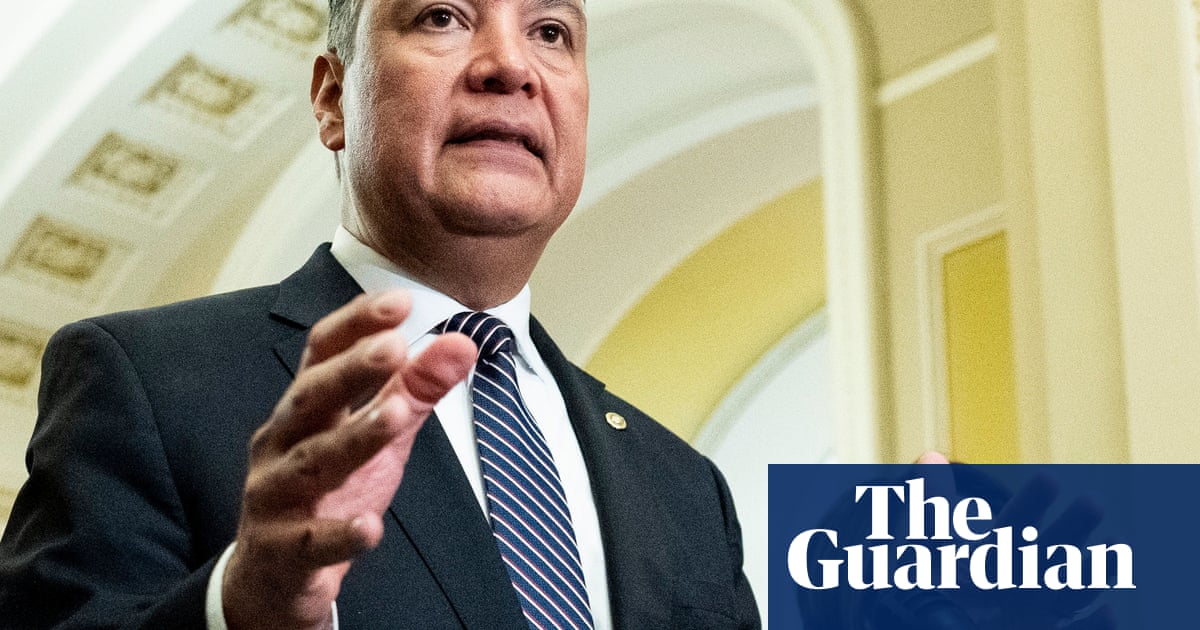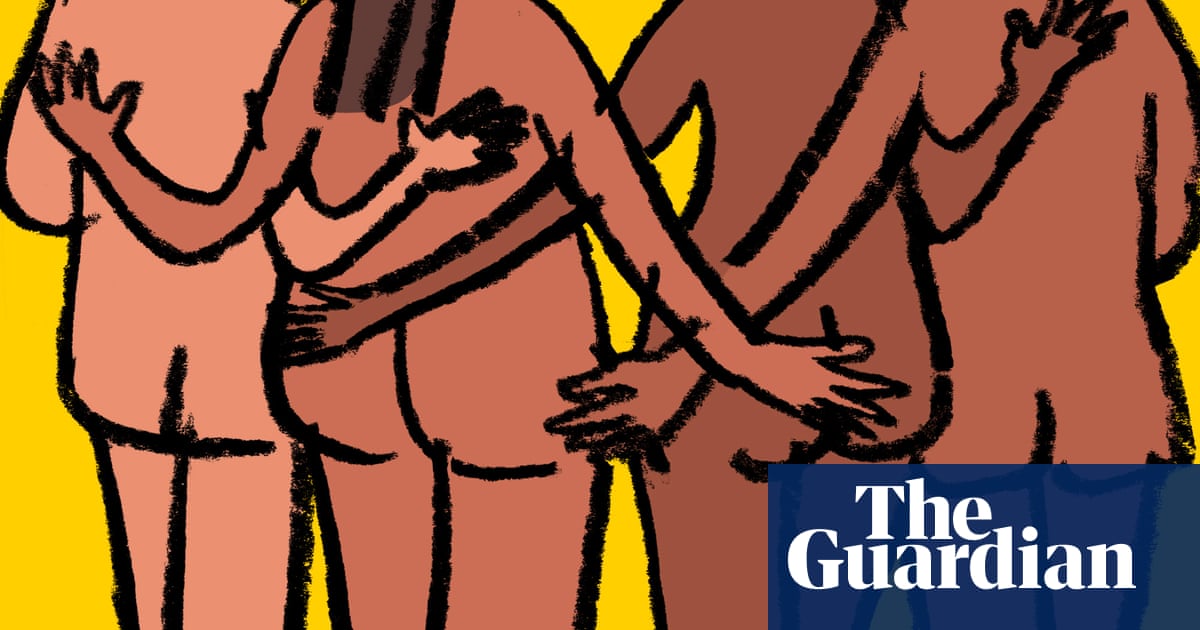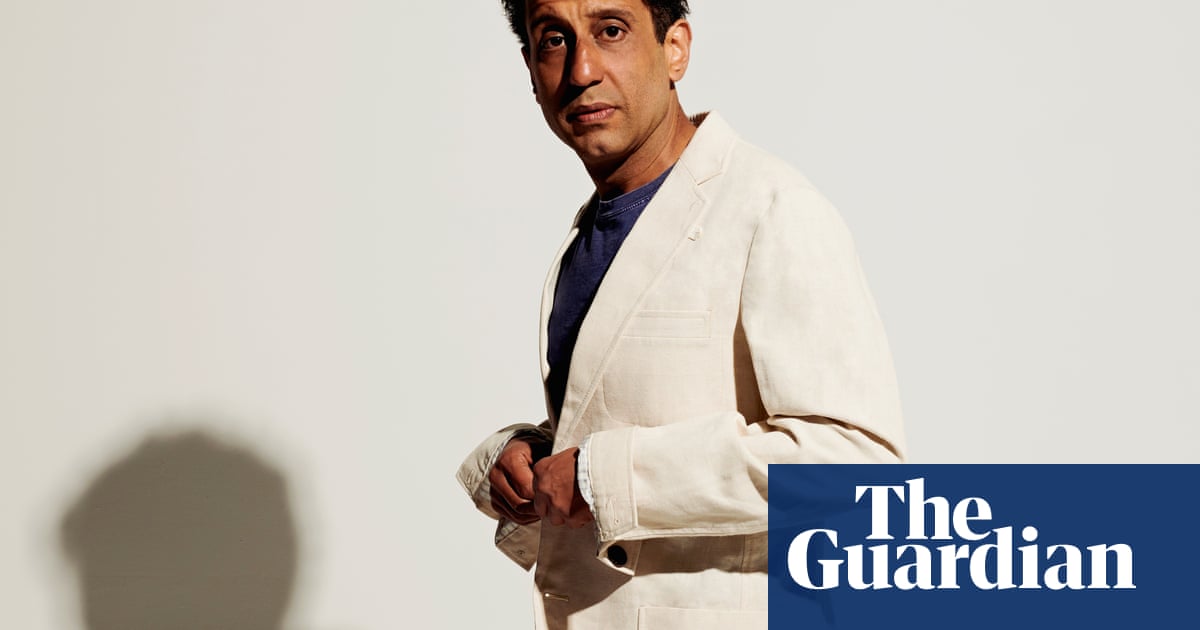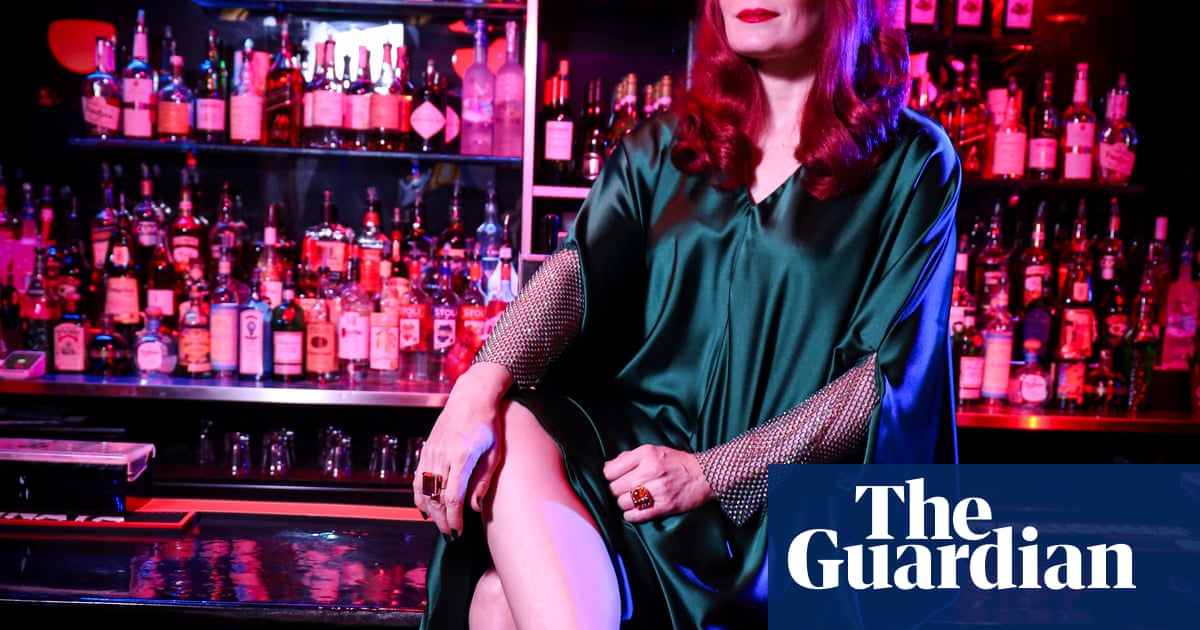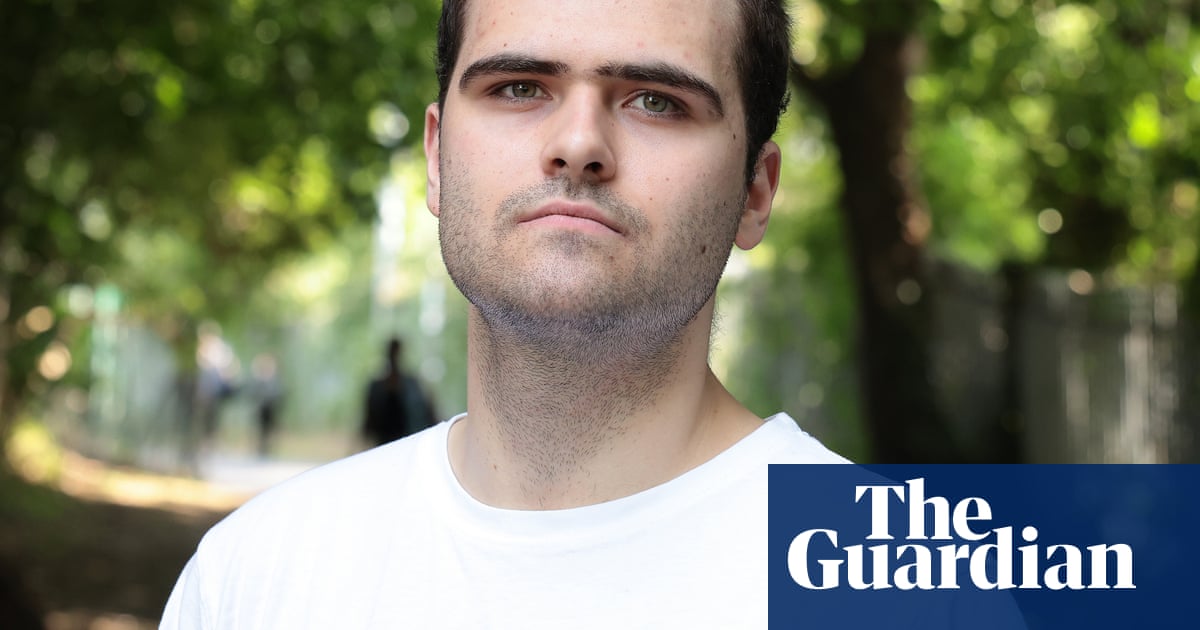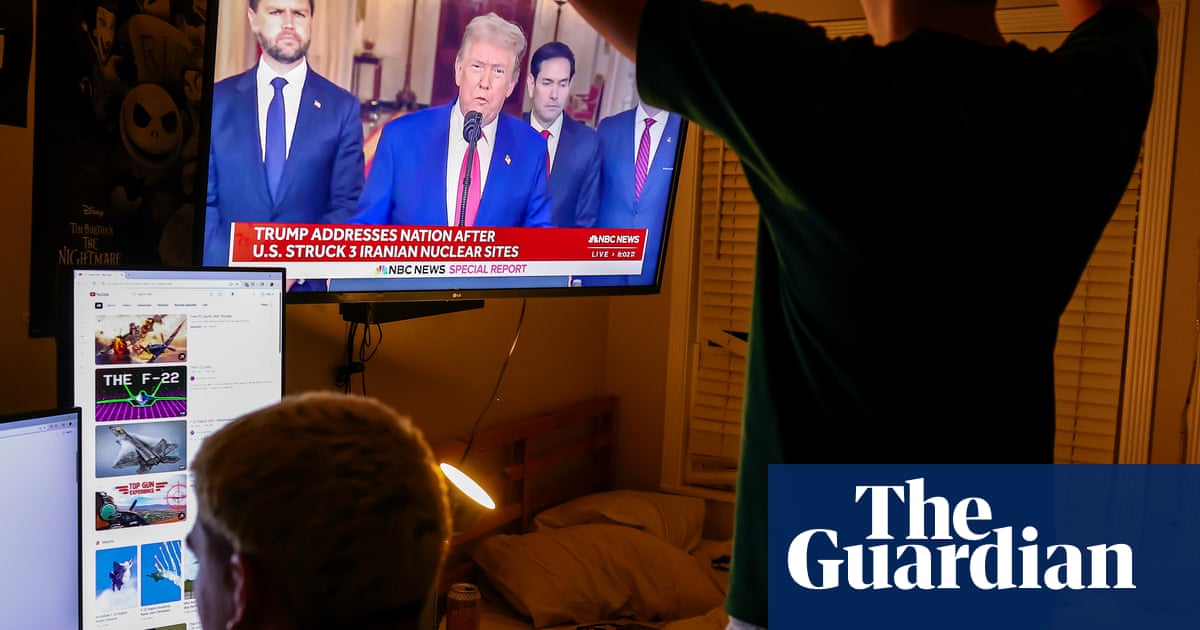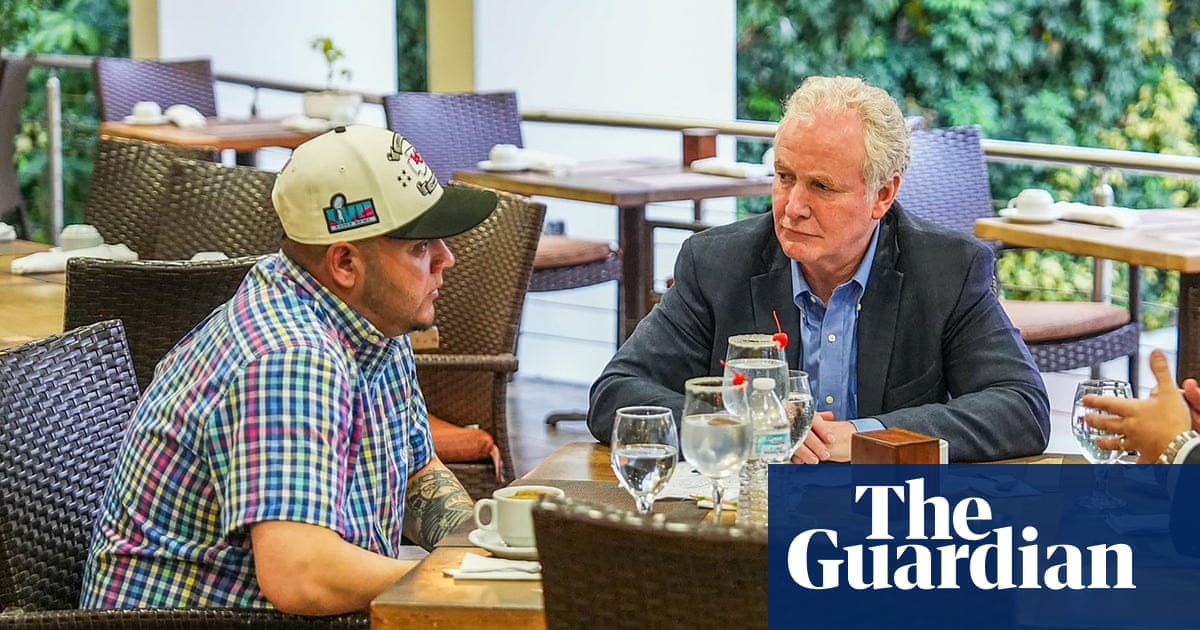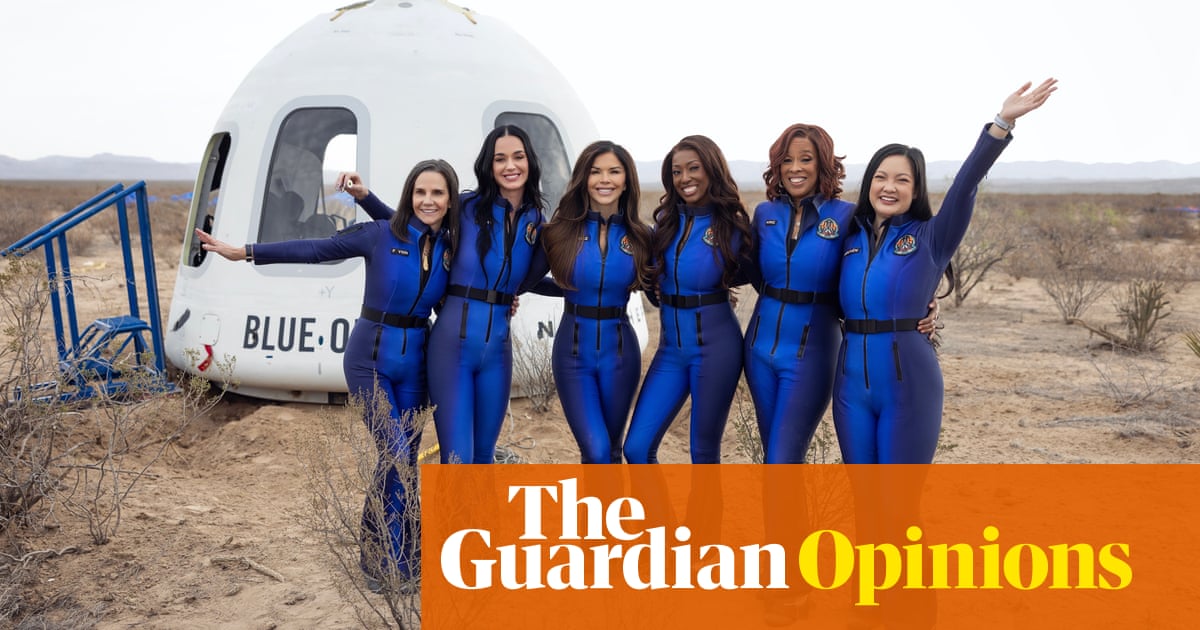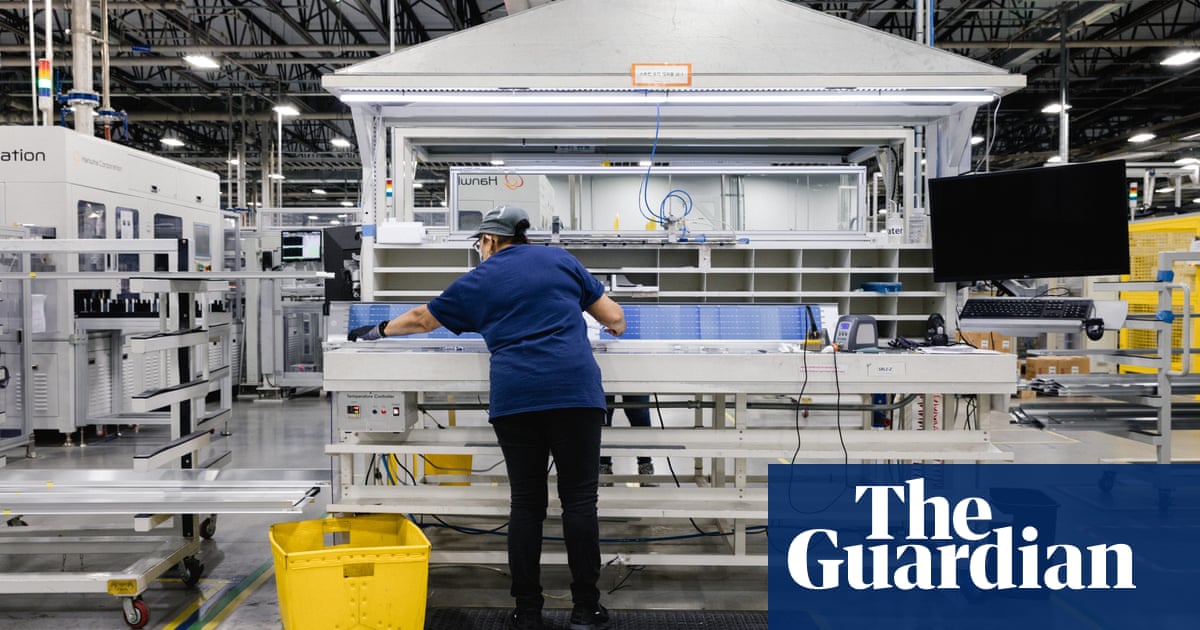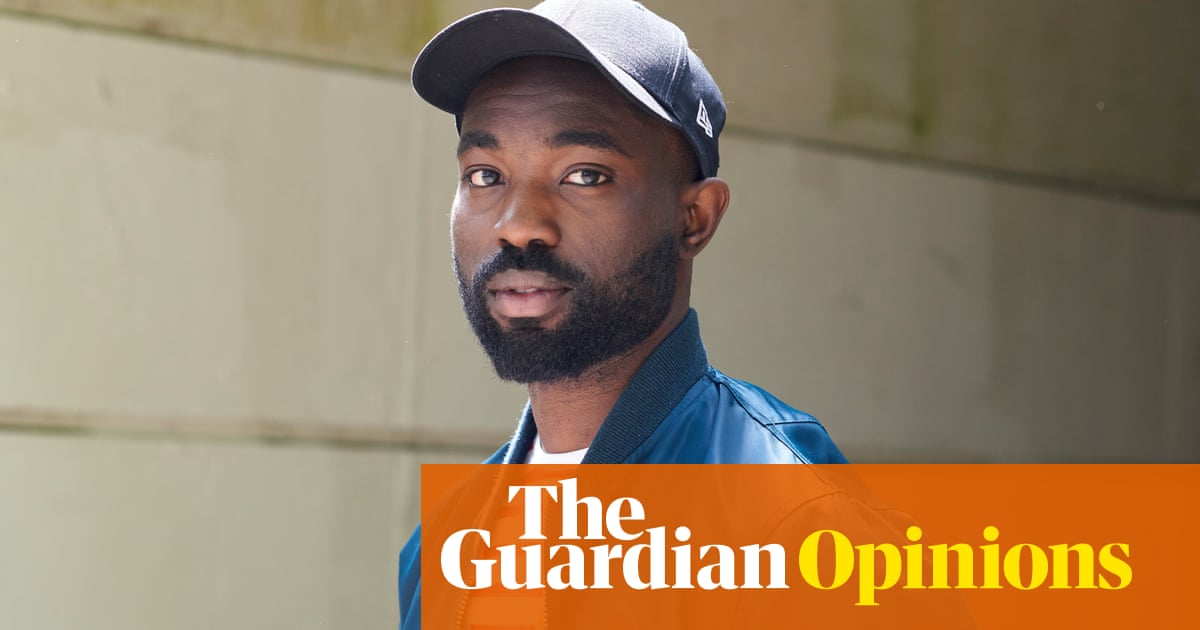Katie Lundgreen Urness’s struggles with disordered eating began when she was just 11.
A gymnast, she put a lot of value in being petite. Urness, 28, who lives in Utah, remembers longing for candy as a child but “feeling like I couldn’t eat a single Skittle”.
After nearly a decade of struggling, she sought medical help and was diagnosed with anorexia nervosa. Urness’s hard-won recovery was driven by her dream of motherhood – she knew she wanted a baby and worried it “would suffer and not develop right because I was restricting food”, she recalls.
When Urness became pregnant at 25, her relationship with food was the healthiest it had ever been. Soon, TikTok and Instagram began serving her motherhood wellness content, even though she hadn’t searched for it.
One common theme was food purity. Posts warned against the “dangers” of common grocery items – that there was high-fructose corn syrup in most baby formula and harmful levels of pesticides in a box of cereal (both claims have been debunked).
Another theme: the corrupt medical system. “The content is telling you not to trust your doctor, saying the system is outdated and vicious, misogynistic,” says Urness. She recalls creators claiming the glucose drink doctors administer as part of a test for gestational diabetes was “poison”.
Urness watched influencers who have been critiqued by experts for exaggerating and misrepresenting health risks, including Courtney Swan, who has recommended a supplement to “detox the spike proteins” of the Covid vaccine; self-styled food-safety investigator Vani Hari, whom Vox called a “peddler of pseudoscience”; and siblings Casey and Calley Means, a physician and entrepreneur, the latter of whom claimed “kids should be drinking more raw milk” despite medical consensus that it can contain pathogens linked to life-threatening illness.
These creators have much in common: all encourage hypervigilance about supposed dietary threats, have publicly supported health secretary Robert F Kennedy Jr, and profit from the ideas they spread. Many food-purity creators benefit from ad revenue driven by their attention-grabbing claims or sales of products like supplements, diet books, colon cleanses or online courses.
“There is a small grain of truth in some alarmist food content”, which helps it appeal to people’s sense of skepticism and caution, says Christy Harrison, a registered dietitian, author and host of the Rethinking Wellness podcast. “But it often gets blown up beyond all proportion.”
For instance, the American food industry engages in problematic practices, such as confined animal feeding operations and industry lobbying against regulations. “But in my many years of reading nutrition research, I’ve found that the rhetoric connecting food-industry practices to weight and human health is often overblown and not backed by sound science,” she says.
Watching these sensationalist social media posts “planted a seed in my head”, Urness says. By the time she delivered her son in 2023, she was obsessively fixated on the healthfulness, safety and purity of food. “I was scared to even eat the vegetables in my fridge” because of pesticides, she says.
“I thought it would be safer for me to risk going back to restrictive food patterns to protect myself and my breastfed baby from all these bad things,” says Urness.
According to experts, anxious preoccupation with the safety and purity of food is a form of disordered eating called orthorexia.
“Orthorexia nervosa was coined in 1997 by an integrative physician named Steven Bratman,” says Harrison, the dietitian. “He was seeing a lot of obsessive thinking about food and nutrition in his patients.”
Being mindful about food isn’t inherently disordered – many people want to eat healthily. By contrast, “orthorexia can be defined as an obsessive and extreme fixation on food, like purity of food, healthfulness of food, cleanliness,” Harrison says. “It’s a very common way people can be disordered about eating,” she says. Chemophobia, an irrational, broad distrust of chemicals based in misinformation, is another common symptom.
Nonetheless, orthorexia remains under the radar. It is not yet listed in psychiatric classification systems such as the DSM-5, and can be difficult for doctors to distinguish from basic health-consciousness.
Orthorexia can present on a spectrum and be harmful regardless of severity, explains Harrison. Severe orthorexia presents as a level of obsessiveness that can “interfere with people’s lives”, disrupting major factors such as social relationships and work, she says. It can lead to nutritional deficiencies, and co-occur with body dysmorphia, obsessive-compulsive disorder and anorexia.
“It’s not just healthy eating. It takes over your entire brain,” says Urness, who still considers herself orthorexic, but is working on recovery.
A 2023 meta-analysis found that orthorexia is prevalent across genders, and that “the proportion of orthorexia nervosa symptoms seems to be increasing”. Men are more likely to frame restrictive eating around performance and fitness (think raw-meat diets and biohacking) and women around food-purity concerns.

Clinically significant orthorexia – cases where obsessive “healthy” eating causes impairment in daily life – is rare in research studies. But the current literature does not capture what’s happening right now, says Danielle Shine, an Australian registered dietitian and PhD candidate researching nutrition misinformation in social media, who is working with several clients in recovery from orthorexia.
“Social media is causing more and more people to develop disordered beliefs and behaviors” around food, says Shine.
One 2017 study found that 49% of Instagram users who followed health food-oriented accounts displayed orthorexia symptoms. Since then, short-form video platforms including TikTok have risen in popularity, supercharging the reach of alarmist food-purity content.
Allison Hume, 40, an elementary school teacher and mother of two in Ontario, found herself acutely anxious about her and her family’s health and safety after a difficult second birth during the Covid pandemic.
“While rocking my new baby, I spent hours on social media,” she said. In particular, she consumed information from Hari and Bobby Parrish. Parrish, a creator without formal nutritional qualifications, has been criticized by chemists and dietitians for spreading alarmist misinformation.
These creators “made me feel safe at the time, because their information was so black-and-white”, says Hume. “They would say: ‘Stop eating x, y and z and you won’t get cancer.’ It felt comforting.”
Hari has a “no-no list” that includes many common ingredients generally recognized as safe when consumed in typical amounts, including natural flavors, emulsifiers and MSG. Many of these additives are found in ultra-processed foods, which the National Institutes of Health generally advises everyone to eat less of due to their frequently high fat, salt and sugar content. But seeing these additives framed as outright threats, Hume began to fear them.
She tossed all foods containing these “no-no” ingredients, and shopped exclusively at high-end natural food markets. This doubled her grocery spending, “which was a big financial strain”, she says.
To check whether products contained forbidden additives, Hume used ingredient-scanning apps. If she had to purchase something “bad” because an approved item was unavailable, “it would be hard to sleep at night”, she says. “I really did think that our health was at stake if I didn’t follow these rules. The idea was that if we did get sick, it would be my fault and mine alone.”
At the time, she didn’t know there was a name for the obsessive, disordered thinking she was experiencing. “I was in denial that anything was wrong with me,” she says.
But her family noticed huge mood changes. Hume became irritable and controlling. “I remember asking myself why everything was so hard,” she says. “Why aren’t other people following the same food rules? Why don’t they care about their health as much as I do?”
When she reflects on these habits now, Hume feels guilty. “It did end up affecting others around me as well, in particular my mom,” she says. “She also has a lot of health anxiety and it increased due to my influence.”
Now, Hume is working with professionals to overcome orthorexia, and believes that content creators intentionally manipulate people like her.
“They are very aware of what they are doing. They are making a lot of money off vulnerable people like me … people like parents, the elderly and the chronically sick, and I really don’t think they care,” says Hume.
Since the Covid-19 pandemic, trust in American health institutions has declined, creating fertile ground for wellness misinformation. In its place has risen a conspiratorial digital ecosystem and anti-science rhetoric promoted by figures such as RFK Jr – whose “Make America healthy again” (Maha) slogan has been adopted by his supporters, including a subset of self-described “mama bears” who see themselves as family protectors.
“If I’m nursing a baby and my brain is tired, it’s really easy to fall for these emotionally charged videos that are designed to target the ‘mama bear’ within me,” says Urness.
Alarmist Maha posts can trigger or perpetuate orthorexic behaviors in viewers, even if that is not the creators’ intention.
In food-purity culture, personal vigilance is the only safeguard against threats to health; sickness is caused by being lazy, ignorant and poisoning yourself. Mama bears have adopted this logic with particular fervor. They often share Kennedy’s quote about the US food system: “The last thing standing between a child and an industry full of corruption is a mom.”
after newsletter promotion

Some Maha ideas align with practices informed by scientific research – for instance, eating fewer ultra-processed foods in general, reducing your exposure to plastics where possible, and thinking critically about food safety. But Maha mom creators also spread misinformation; in one viral post, a creator falsely claimed that propylene glycol – used as a food additive in salad dressing – was the same as antifreeze.
The underlying message of much Maha food content is that mothers must try to cook from scratch as much as possible, not just because it’s tasty or pleasant to do so, but because food in the US is inherently “dangerous”.
Yet according to the 2022 Global Food Security Index, the US ranks third in global food-safety standards, behind Canada and Denmark. “We have an incredibly safe food supply in the US in general. Historically, the FDA has done a pretty good job of keeping us safe,” says Harrison. “And I’m no apologist for the food industry.”
“My issue with it is that they’re using food as a way to try to entrap women and give up certain types of political and economical power,” Dr Alex Ketchum, a professor at McGill University’s Institute for Gender, Sexuality and Feminist Studies, whose work explores food and culture, says of Maha ideology.
More domestic work means less time for community engagement, activism and ambitions. In her 1995 work Unbearable Weight: Feminism, Western Culture, and the Body, philosopher Susan Bordo describes dieting as a form of self-deprivation that aligns with broader cultural narratives requiring women to limit their presence in the public sphere, both physically, by being smaller, and socially, by conforming to restrictive ideals. For Bordo, this shrinking is less about weight than about diminishing women’s agency and visibility.
Orthorexia extends this logic: its norms of hypervigilance, self-reliance and purity represent another form of self-discipline serving systems of control. It is also politically useful to keep people anxious about what’s safe, what’s true and who can be trusted.
“Holding citizenry in fear and making them anxious around food in particular is one of the ways authoritarian or totalitarian leaders exert their power,” observes Dr Emily Contois, an associate professor of media studies at the University of Tulsa.
In Benito Mussolini’s fascist Italy of the 1920s-40s, says Contois, food became a political tool used to reinforce women’s roles in the home. The regime relied on women as domestic caretakers – what Contois calls “home-front civic engineers”. Mothers were expected to make do with food shortages, masking policy failures with their sheer force of labor as the government failed to provide basic care.
Navigating the medical system can be frustrating for people with chronic illnesses who don’t feel like they’re getting satisfying answers from their doctors. The idea of experimenting with alternative paths to relief, like “cleaning up” one’s diet, can feel like a matter of survival. But attempts to get better can spiral into a harmful place.
Anna Zambreny, 29, a Maryland-based healthcare recruiter, says she has spent at least six years with orthorexia.
Zambreny cut out foods including gluten, dairy, eggs and meat while trying to heal various ailments, including eczema, Lyme disease and fatigue. The safest way to try eliminating food groups is with the help of a registered dietitian who can ensure adequate nutrition; Zambreny took advice from social media food-purity influencers and an allergist who recommended scientifically uncredible books like Dr William Davis’s Wheat Belly.
“The idea that we weren’t being told the truth about food and that it was poisoning us started to affect my relationships. I didn’t really want to eat out … I didn’t really enjoy anything,” she says.
Zambreny’s health symptoms progressed despite her efforts; now she reflects that many of them were likely rooted in self-inflicted malnourishment.
“I felt like everything I was eating could make or break my health,” she says. “I don’t think I was getting enough variety of food.”
Today, Zambreny feels angry and frustrated with the influencers she once trusted, some of whom she’s seen flip-flop on their messages.
“They were vegan and then they’ve gone completely carnivore, or they were anti-medication and now they say getting on anxiety medication is the best thing that ever happened to them. And that feels very harmful to me because depending on when you tune into what they are talking about, it can really sway what you’re doing,” she says.
“It makes me mad,” says Zambreny. “It feels like they don’t actually care about changing health policy. It’s more like status they’re looking for … They’re so out of touch with the health advice most people need.”
Zambreny’s frustration may resonate at a moment when basic nutritional support is eroding, hunger rates are climbing and food prices are surging. This year, Trump has cut $660m of funding for local produce in schools and childcare centres, and canceled another $500m in funding for the Emergency Food Assistance Program, which helps food banks. He has also proposed reductions to the Community Eligibility Provision (CEP), threatening universal free meal programs for children and the Supplemental Nutrition Assistance Program (Snap), which approximately 42 million people rely on for food essentials.
“There’s this expectation that you are personally responsible for your own health,” says Contois – despite social determinants of health, such as physical environment, education access and economic status, being largely beyond individual control.
Fear-mongering around less urgent issues can distract people from more pressing health risks. “If you can make people afraid, you open the door for all sorts of policies to be possible,” says Contois.
For instance, West Virginia recently banned several food dyes. But the state has some of the highest diabetes, heart disease, cancer, infant mortality and drug-overdose rates in the country. Experts argue the ban is performative, and will not meaningfully improve West Virginians’ health.
“It’s gamifying government and science and regulation instead of actually creating processes that ensure a safe, fair and transparent food system for all,” says Contois.
Social media food-purity culture does not tend to focus on systemic problems such as the climate crisis degrading water and soil quality, or reduced oil-and-gas industry regulations that could lead to more heavy-metal pollution in the environment and foodways.
Telling people their biggest problem is junk-food additives or pasteurized milk is a “distraction from the collective challenges of the US food system”, says Ketchum. Orthorexia shows us what can happen when confusing, alarmist voices fill the silence left by collapsing health and environmental institutions.
“Science-minded professionals saved me in the end,” says Hume, who now follows several evidence-based health and nutrition professionals on social media, including dietitian Andy Miller and health communicator Dr Andrea Love.
For people struggling with orthorexia, Harrison recommends working with a registered dietitian and a therapist. Treatments for orthorexia include “challenging disordered beliefs about food, [dietitians] offering ‘meal support’ to help clients get through anxiety-producing meals and referring to a higher level of care if needed”, she says.
It has taken consistent hard work and patience, but Hume has “very few food fears” now. “I remember telling my psychotherapist that I ate a hot dog for the first time in three years,” she said. “I was very nervous about it, but boy, was it good!”
But Hume has already lost a lot to her food-purity obsession. “I always get teary-eyed when I think back to missing all the special memories I could have made with my newborn and my three-year-old,” she says. “I was so preoccupied with what I thought was keeping them ‘safe’.”
Recovery from orthorexia isn’t only about personal healing. It also requires a cultural shift: access to safe, science-backed nutrition for all; investment in public health infrastructure; and a renewed commitment to care, trust and collective responsibility for our shared wellbeing.
“This isn’t a time to put up a fence and build a moat,” says Contois. “This is the time to build a longer table and invite other people into it. That’s the only way we get through this.”

 1 month ago
41
1 month ago
41

